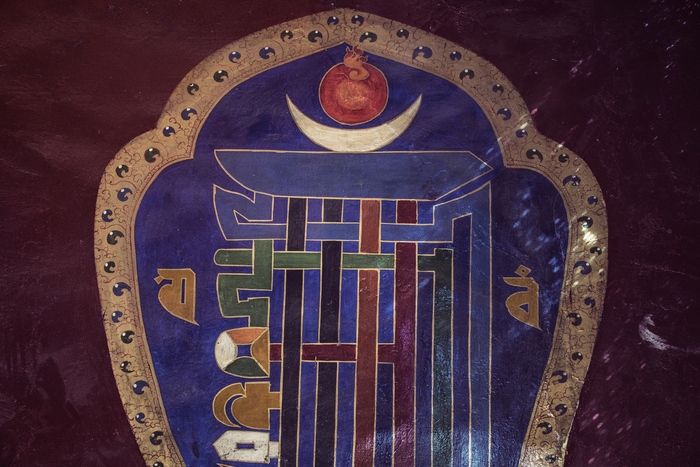“Kalachakra” means cycles of time, with time being a measurement of change, both externally in the world and the universe, and internally within the body. As such, it can be measured in many ways. Externally, there are the cycles of the orbits of the planets, the months and seasons of the year, the phases of the moon, the hours of a day and so on, not to mention historical cycles and periods of peace and war. Internally, there are the cycles of the periods of life (infancy, childhood, youth, adulthood, and old age), the menstrual, sleep, and circadian cycles, the number of breaths in a day, and the like. These external and internal cycles closely parallel each other. Just as stars, galaxies and universes go through cycles of formation, endurance, dissipation and extinction, humans undergo the cycles of birth, a lifetime, old age and death together with a bardo, or in-between period. Further, both the internal and external cycles have been repeating beginninglessly with the continuing rebirth of universes and lifetimes.

Our experience of these external and internal cycles of time is fashioned by our karma. Karma is the mental factor that compulsively draws us into doing, saying or thinking something, and is based on unawareness and confusion about the effect of our behavior and about how we, others and everything exists. According to some explanations, karma also includes the compulsive energy with which we act and speak, as well as the compulsive shape of our actions and compulsive sound of our speech. As a result of our karmic behavior, we experience uncontrollably recurring rebirth subject to the ravages of the external and internal cycles of time. As a further result, we experience those cycles with the sufferings of yet further cycles of unhappiness and the type of happiness that never lasts and never satisfies. Kalachakra adds to this description the cycles of the winds of karma that are responsible for the appearances (mental holograms) that our mental activity gives rise to during the cycles of being awake, dreaming, in deep sleep, and during the occasional peak experience of orgasmic bliss.
There is a third cycle of time known as “alternative Kalachakra,” a cycle of tantric initiation (empowerment), two stages of practice and the attainment of Buddhahood. This cycle is not only an alternative to the external and internal Kalachakras, but is the antidote to being under their detrimental influence. After all, if our energy, clarity of mind and moods are influenced by the weather, the amount of sunlight during the day, hormonal changes, age-related degeneration and so on, not only does this hamper our ability to fulfill our own aims, it also prevents us from being effective in helping others.
Kalachakra is unique in many ways. As part of its presentation of the external cycles of time, its literature provides the complex mathematical formulas for calculating the positions of the sun, moon and planets, the length of day at the summer solstice, the timing of eclipses, the lunar calendar and astrological horoscopes. It even includes engineering instructions for constructing mechanical devices useful in peacetime and war. The discussion of the internal cycles provides detailed descriptions of the subtle energy system of the body, with its chakras, channels and drops, plus many aspects integrated into the Tibetan medical tradition, as well as an analysis of Sanskrit phonetics.
The Kalachakra initiation and the two stages of practice are also unique, with many features different from those of the other anuttarayoga tantras. In keeping with the parallelism between the external and internal Kalachakras, the initiation is conferred in stages corresponding to and modelled after the stages of life. The mandala palace and body of the main Buddha-figure have the same proportions as the model of the universe and the human body. Because of the complexity of the outer and inner worlds and the need for a full purification of both, the mandala contains more figures than almost all other tantra systems. The various sets of figures among the 722 inside and around the palace correspond to such sets as the number of days and months in a lunar year, the signs of the zodiac, the major constellations, the number of bones and joints in the body, as well as the senses, elements and aggregate factors of body and mind. Further, the final stages of practice with the subtle energy system give rise to a unique way of accessing the clear-light mind (the subtlest level of mental activity) and a unique type of subtle body (a devoid form) that serves as a prototype for the Form Bodies of a Buddha.
Summary
The practice of Kalachakra is extremely advanced and sophisticated. Even in its less complicated forms with abbreviated mandalas containing fewer figures, it is still a very challenging practice. Nevertheless, with proper motivation, preparation and sustained effort, it is extremely effective for attaining enlightenment for the benefit of all.
Unlike other advanced tantras, there is a tradition of giving the Kalachakra initiation to large groups of people, as a way of fostering harmony and world peace. His Holiness the Dalai Lama first gave the initiation in Lhasa, Tibet in 1954 and since then, close to two million people have attended the Kalachakra initiations he has given all over the world.
[See: Overview of Kalachakra]